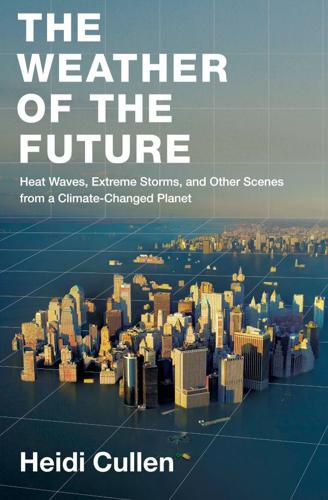
The Weather of the Future
by
Heidi Cullen
Published 2 Aug 2010
The problem with verification of such results is that it’s not possible to jump to the end of the century to see if a climate model is any good. But scientists can get around this by using their models to simulate events that have already happened. This simulation is called hind-casting, and it’s an efficient way to test whether a climate model is skillful. Successful hind-casting experiments boost our confidence that climate models can capture past events and therefore can serve as a decent guide to the future. By successfully hind-casting a number of past situations (the effects of volcanic eruptions, seasonal variations, etc.), we can increase confidence in model simulations of the future. Basically, we can’t prove that the models are right until the future happens, but we can prove that the models function by using certain rigorous tests.
…
Basically, we can’t prove that the models are right until the future happens, but we can prove that the models function by using certain rigorous tests. Scientists have performed hind-casting studies on several major events in climate history to test how well the models can reproduce the climate at those times. They’ve modeled the height of the last ice age about 20,000 years ago, known as the Last Glacial Maximum (LGM), as well as a regional cooling event in Europe and North America roughly 500 years ago, known as the Little Ice Age. There are also a few, rare opportunities to run a climate model in forecast mode.
…
If the recent warming trend were a result of natural forcings, then, assuming the models are correct, the model simulations would capture it and you would see a match between the observed record and the climate model. In fact, there isn’t a single model that is able to produce a trend comparable to what we can see in the real world. Houston, we have a problem. Climate models are not only important for showing us what could happen but are also a valuable tool for showing how much of it is our fault. With hind-casting, scientists can use climate models to isolate the physical fingerprint of human activity and figure out where the heightened levels of carbon in the atmosphere are coming from. Here’s how it works. Different forcings—such as changes in solar radiation, volcano eruptions, or fluctuations in greenhouse gas concentrations—imprint different responses, or fingerprints, on the climate system.
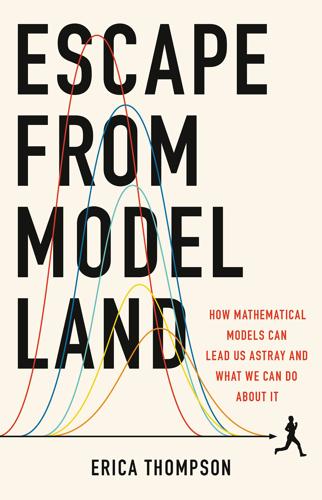
Escape From Model Land: How Mathematical Models Can Lead Us Astray and What We Can Do About It
by
Erica Thompson
Published 6 Dec 2022
In addition, we can generate an archive of hindcasts: retrospective forecasts made with the current version of the model. Today’s best weather model could use the data available on 1 January 1950 to make a hindcast of the weather on 2 January 1950, effectively generating the forecast that could have been made on that date if only today’s model had been accessible at the time, and then comparing it with the actual weather recorded on 2 January 1950. Hindcasts are used to generate reliability statistics for new models before a sufficient quantity of out-of-sample (true forecast) data becomes available. Yet hindcasts are not forecasts: although they do not make direct use of the data they are trying to forecast, they do make indirect use of them.
…
Yet hindcasts are not forecasts: although they do not make direct use of the data they are trying to forecast, they do make indirect use of them. The hindcast made with today’s model for summer 2003 is able to forecast the heatwave well, but only because the knowledge that such an event could happen was incorporated into the development of the model. Therefore, the performance of hindcasts always gives an optimistic estimate of the performance of the model in true forecast mode. Yet the only real-world use of the model is in that true forecast mode: we do not know what might happen next year to prompt further development of the model.
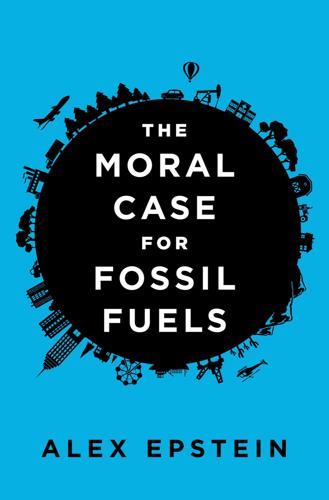
The Moral Case for Fossil Fuels
by
Alex Epstein
Published 13 Nov 2014
Therefore we need to ask the experts advising us an obvious and essential question: How good are the models at predicting warming or the changes in climate that are supposed to follow from warming? One pitfall in asking this question is that we have to make sure we have evidence of models predicting climate in advance. Why do I say “in advance”? Because part of climate models involve “hindcasting” or “postdicting”—that is, coming up with a computer program that “predicts,” after the fact, what happened. There are reasons to do this—namely, it’s important to see if your model could have accounted for the past. But a model is not valid until it makes real, forward predictions. It’s a truism in any field of math that if you are allowed enough complexity, you can engage in “curve fitting” for any pattern of data with an elaborate equation or program that will “postdict” exactly what happened in the past—but in no way does that mean it will predict the future.
…
Thus, not just Hansen’s model but every climate model based on CO2 as a major climate driver has been a failure. Here is a graph of 102 prominent, modern climate models put together by John Christy of the University of Alabama at Huntsville, who collects satellite measurements of temperature. Even though the modern models have the benefit of hindsight and “hindcasting,” reality is so inconsistent with the theory that they can’t come up with a plausible model. And note how radically different all the predictions are; this illustrates that the field of predicting climate is in its infancy. Figure 4.3: Climate Prediction Models That Can’t Predict Climate Source: Christy, Climate Model Output from KNMI, Climate Explorer (2014) Here’s the summary of what has actually happened—a summary that nearly every climate scientist would have to agree with.
…
., 73 SkepticalScience.com, 110 slavery, 41 smog, 20, 79, 143, 152, 158 Socrates, 91 solar cells, 47 solar power: backup required for, 53 concentrated solar power (CSP), 47–48 cost of, 46 cutting-edge promise of, 12 diluteness of, 48–50, 49, 65 energy from, 3 in Germany, 50–55, 51, 52 inadequacy as energy source, 57–58, 135 intermittency problem of, 48, 50–53, 65 niche uses for, 58 process of producing, 46 solar photovoltaic (solar PV), 47 supporters of, 9 unreliability of, 12 world use of, 11, 12, 44, 44 specialists, specialization, 27, 71, 112–14 standard of value, 29–33, 136, 195, 201; see also human life Standard Oil, 74 statistics: about disasters, 120–26, 121–25 cherry-picking, 54 computer models, 100–104, 102, 103, 108, 138 explicit endorsement without qualification, 110–11 hindcasting with, 101, 103 limited value of polls, 27 manipulation of, 17, 29, 99, 108, 109, 111–12 political uses of, 109 satellite data, 120 speculative models, 164–65 steam engine, 68, 74, 141, 142, 184 storm energy, 105, 105 storms, deaths from, 23, 121, 123–25, 123, 125, 128 storm walls, 131 sugarcane, energy from, 56 sulfur, 154, 168 sulfur dioxide, 47, 68, 158 sun, infrared radiation from, 97 sunlight, see solar power Superstorm Sandy, 24, 25 supply and demand, 75 sustainability, 177–79, 180–81 synthetics, 72, 83 technology: abuse of, 162–63 and climate livability, 126–29, 133, 137 development of, 18 energy needed to run, 129 energy needs met by, 34, 128–29, 172–73 opponents of, 196–97 solutions via, 134–35, 156–59, 207 technophobia, 164 temperature inversion, 158 temperatures: and CO2, 22, 23, 108 deaths from, 23, 121 excessive, 128 and greenhouse effect, 22, 97, 102–3 rising, 7, 22, 104 and weather, 93 Tesla Roadster, 72 thorium, 61 3D seismic imaging, 71 Three Mile Island, 62 time, 172, 183, 185–86 titanium dioxide, 49 Tol, Richard, 111 transformation, as moral ideal, 200–202 transportation: cost of, 82 high-energy, 128 improved, 123 travel, 84–85 trucks, 82 tsunamis, 130, 142 tuberculosis, 145, 146, 175 Turkey, hazelnuts grown in, 46 underdeveloped nations, 136–37 United Nations (UN): on energy supply, 26 The State of Food Insecurity in the World, 56–57 United States: air pollution in, 152–53, 153 energy availability in, 41–42 life expectancy in, 128 storms in, 124–25 technology in, 128 zero deaths from drought in, 126 uranium, 61, 196 value: of human life, see human life standard of, 29–33, 136, 195, 201 Washington, George, 147 waste disposal, 21, 142, 147–49, 148 water: bacteria-filled, 128, 142, 145 clean, 19–20, 20, 67, 86 distilled, 167 for irrigation, 83 lesser meaning of, 31–32 purification of, 144, 148–49 quality of, 143–45, 143, 163–64 shortages of, 178 for solar and wind installations, 56 water purification plants, 21 water vapor, 94, 97, 99 wealth, creation of, 18 weather: misrepresentation of, 105–6 storm-related deaths, 23, 121, 123–25, 123, 125, 128 unsettled conditions, 21 use of term, 93 wet mass movement, deaths from, 121 wilderness, pristine, 30 wildfires, deaths from, 121 wind, cause of, 47 wind power: backup required for, 53 cutting-edge promise of, 12 diluteness of, 48 energy from, 3 in Germany, 50–55, 51, 52 inadequacy as energy source, 57–58, 135 intermittency problem with, 48, 50–53 in Netherlands, 131 niche uses for, 58 resources required in, 49–50, 49, 56, 154–55 turbine blades, 49 unreliability of, 12 world use of, 11, 12, 44, 44 wood, energy from, 55, 56 World Bank, 28 Yergin, Daniel, The Prize, 159
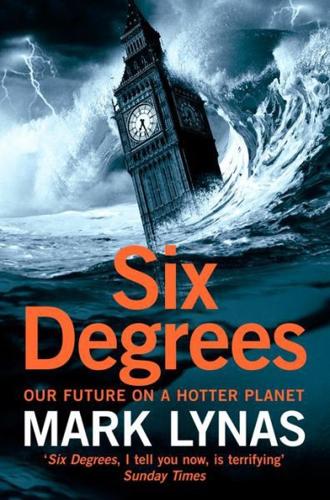
Six Degrees: Our Future on a Hotter Planet
by
Mark Lynas
Published 1 Apr 2008
However, the computer model study led by Oxford University's David Thomas forecasts that the great sand seas of the Kalahari will be well on their way to total remobilisation once global warming reaches three degrees. Again, several different computer models were used, and tested initially to check their ability to successfully ‘hindcast’ the observed 1961-90 regional climate. All passed the test. Although the models do not make a perfect match with Hoerling's study, they do suggest large-scale drying-not because of the Indian Ocean this time, but because hotter temperatures across the region increase the amount of water evaporating from the land surface and from vegetation.
…
Climate change over the past century can be simulated with almost unerring accuracy by the most powerful recent models, suggesting that the equations governing the atmosphere's response to the heat-trapping effects of greenhouse gases are now pretty close to reality. And model evaluation is based on much more than guesswork. ‘Hindcasting’ the twentieth century is one way of checking that a model works, but models can also be calibrated using other time periods-the depths of the last ice age, for example, or warmer periods in the more distant past. After all, to be believable as a predictor of the future a model needs to be able to accurately simulate the past.
…
acid rain 171, 228, 230, 249 adaptation 94, 103, 196, 208-9, 220, 235 Afifi, Abdulkader 268 Africa 120 agriculture 89-90, 157-8, 173, 195 ancient 108, 220 disease 151-3 drought 22, 101-5, 173, 194 famine 112, 113 glacial retreat 13-18 monsoon 20-1, 52 rainfall 21-2 refugees 159 refuges 210 Agassiz, Lake 10 agriculture xv, 176, 261 abandonment 8, 174, 211 Africa xv, 89-90, 157-8, 173 Arctic 131 Australia 112, 124, 173 Central and South America 82, 85, 89, 134, 173 China 172-3 decline in 90-1, 157, 172-5, 196 drought-resistant crops 174 Europe 59-60, 62, 89 ‘firestick farming’ 122 growing season, extended 131, 158, 196 harvest failure 13, 113 India 78-9, 137, 173, 174 intensive 195 irrigation 8, 58, 82, 86, 140, 144, 159, 197 new areas 157, 186-7, 196, 197 North America 5-9, 88-9, 90, 143-4, 158-9, 173 Pakistan 139-41 refuges 210 slash-and-burn 120 UK 89, 210-11 worldwide agricultural drought 173-4 air-conditioning 59, 62, 178 Alaska 25, 221 meltdown 25-6, 75, 131, 187 North Slope fossils 219, 221 rainfall 129, 193 Alexandria, Egypt 163-5, 167 algae 34-5, 37, 58, 224 Algeria 19-20 Alley, Richard 68 Alps xv, 29-31, 58, 150, 177, 180-1, 246 Amazon River 119 Amazonia 32-3, 153, 175 death of 115-21, 190, 209, 252 deforestation 119-20 desertification 194, 209 drought 112, 115, 116, 173 American Association for the Advancement of Science 204 American Geophysical Union 69 Andes 80-5, 108, 115, 119, 238 Angola 104, 105 animals see wildlife Antarctic Ocean 199-200 Antarctica 67, 176 ancient 108-9, 220, 222, 228 coal 222 ice-free 211, 220 ice sheets 64, 71, 146, 167-70 Anthropocene 208, 235 aquifers 8, 53, 158, 166, 170, 194-5 Archer, David 205, 206 Arctic 10, 66, 128-31 agriculture 196 amplifier 24, 76, 189 ancient 109-10, 198-9, 203 ice-free 25-7, 109-10, 130, 170, 186, 203, 220 meltdown 23-8, 66-73, 186-90, 246 peoples 76-7 vegetation 76 wildlife 33, 72-7, 187 Arctic Climate Impact Assessment 75 Arctic Ocean ancient 199, 219, 249-50 freshwater run-off 188 methane hydrate melt 205-6 sea-ice xx, 72-7, 129, 186-7 Argentina 194 Asian Brown Cloud 136 Atacama Desert, Peru 113 Atlantic Ocean: ancient 201, 218, 219 circulation 9-13, 110, 176 freshwater run-off 10-11 hurricane formation 42-6 North 69 tropical 22 Atlas Mountains, Morocco 180, 181 atmosphere 128-9, 234-5, 236-7 ancient 202-5, 222, 225, 230-1, 249-50 atolls 16, 46-7 Australia 31-8, 95, 211 agriculture 112, 124, 173 bushfires 122-5 coal 221 desertification 194 drought 112, 113, 173, 194 Australian Conservation Foundation 123 avalanches 180 submarine 201, 206-8 Axel Heiberg Island, Canada 203 Baker, Andrew 37 Bakun, Andrew 238 Banda Aceh 207 Bangkok, Thailand 72 Bangladesh 79, 132, 135, 137, 165 Barbados 166 Barrow, Alaska 25 Beever, Dr Erik 40 Bennike, Ole 109 Benton, Michael 230-1 Bhopal, India 238 Bighorn Basin, Wyoming 199 biodiversity 33-4, 91-7, 154-6, 198, 213, 234, 240, 252 Amazon 119 China 171 marine 154 plants 39 under threat 18, 41 biofuels 274-6 Biosphere 2 97 birds 75, 77, 92, 94, 95, 120, 155 Black Sea 237 bogs, thawing 188-9 Bolivia 84, 121 Bombay see Mumbai Boston, USA 165 Botswana 90, 101-5, 151 Bowman, Malcolm 147 Brahmaputra River 138, 193 Brazil 42, 43, 44, 95, 120, 121, 194 desertification 194 hurricanes 42-4 rainforest 120 Brigham, Lawson 189 British Antarctic Survey 110, 167 British Council 14 British Virgin Islands 38 Broe, Pat 72 Bryden, Professor Harry 11, 12 Buffett, Bruce 205, 206 Bunyard, Peter 119 Burke, Eleanor 22 Burkina Faso 90 Bush, George W. 264 bushfires, Australia 122-5 butterflies 92, 93, 95 Cairo, Egypt 195 calcium carbonate 34, 53-6, 221 Caldeira, Professor Ken 54 California 3-5, 8-9, 85-8, 115, 142, 144-5, 195 California Coastal Range 87 Cameroon 232 Camill, Phil 188, 190 Canada xvii, 131, 188, 196 agriculture 90, 144, 158, 174, 196, 197 ancient 7 arctic 76, 131, 187 forest fires 197 fossil fuels 73, 221, 269 habitable areas 196, 197 rainfall 129 river flows 193, 196 Canberra, Australia 124-5 Cape Floristic Region, South Africa 39 carbon 96, 117, 205, 221-2, 267, capture and storage 271, 273, 276 carbon cycle 56, 116, 117-19, 190, 220-2, 225, 227, 250,254-5, 256 carbon trading 257 dissolved 188-9 release from seabed 202 release from soil 117-18, 188, 250-1 sequestering 175, 221-2, 223 carbon dioxide xix-xx, 89, 96-7, 252-3 ancient atmosphere 110-12, 203-4, 220, 225, 229, 230, 233, 249-50 and climate sensitivity 248-9 emissions 78, 131, 204, 234-6, 246-7 fertilising effect of 174 from fires 197, 203 ocean acidification 53-6 plant emissions 60 volcanic outgassing 232, 233, 235 Caribbean 38, 113 Carboniferous period 234 Carnegie Institution 54 cars 172, 271, 272, 276 Carson, Rachel 95-6 Cascades, USA 87 Caspian Sea 178 cattle ranching 8, 19, 102, 103, 119, 184 Cayman Islands 63 Central America 82, 83-4, 85, 89, 133-5, 173 Chaco Canyon, New Mexico 5-6 Chad, Lake 20 Chernobyl 176 Chile 89, 194, 211 Chilingarov, Artur 73-4 Chimu civilisation 82, 83 China xxii, 140, 197, 218 coal 221 conflict 197 desertification 197 droughts 51-3 early civilisation 172-3 emissions 257, 258, 264 floods 112 forests 155 hypercapitalism 170-5 monsoon 52-3, 193, 209 water supply 140, 194 civilisations, collapse of 82-3, 131-5, 174-5 climate change xix-xx, 6, 10-11 ancient 15-16, 23, 197-206 conferences on 14 denial 14, 16, 262-5 modelling xv, 105-7, 194-6, 217, 248-51 speed of xxi, 235-6 transient xxi-xxii climate sensitivity 248-50, 252-3 climate zones, shifting 27-8, 123, 129 climatic envelope 94 clouds 107, 114, 125, 175 coal 221, 222, 226, 234, 262, 269, 271 coasts 72, 76, 145-8, 183, 184-5, 193 coccolithophores 54-5, 56 Collapse: How Societies Choose to Fail or Survive (Diamond) 134 Colorado River, USA 6, 86, 142-5, 167 Columbia 121 Columbia River, USA 87 Comiso, Josefino 75 computer modelling 12, 22 carbon-cycle feedback 116-18 climate xv, 105-7, 194-6, 217, 248-51 El Niño 113-14 global and regional models 106 Hadley Model 39, 59, 105-6, 134 hindcasting 104, 106 hurricane 128 hydrological 139 sea temperature 110 conflict 6, 212-14 over climate refugees 141, 159, 179 over habitable land xxii, 197 over oil 268-9 over water xxii, 85, 86, 141 conservation, site-based 94 continental climates 198 continental drift 218 continental shelf 237 collapse of 201, 206-7 contraction and convergence 257 Cooke, Jennifer 184, 185 cooling: aerosols 135 north-west Europe 9, 12, 211 nuclear winter xviii, 125, 233 Younger Dryas 10 coral: bleaching 34-9, 154-5 reefs 34-9, 42, 63, 91, 154-5, 209, 220, 246 Coral Coast, Fiji 38-9 Cordillera Blanca, Peru 81-2, 84 Cordillera Central, Peru 83-4 Cornwall 28 Costa Rican golden toad 40-1 Cox, Peter 117, 273-4 Cretaceous 56, 200, 217-23, 236, 250 Crump, Marty 40-1 CSIRO 33-4, 122-3 cyclones see hurricanes Cyprus 62 dams 86, 142-3, 167, 196 Dante xviii, 217, 245-6 Danube River 181 Dasuopu, Tibet 14 Dawson, Mary 197, 198 Democratic Republic of Congo 16 Day After Tomorrow, The 9 deforestation 14, 175-6, 247 Amazonia 119-20 Central America 134 deforestation diesel 276 deglaciation see glaciers denial 14, 16, 262-5 Denmark 73, 149 Department for Environment, Food and Rural Affairs (UK) 78 Department for International Development (UK) 139 desalination plants 178 desert: Amazonia 115, 116 Europe 58, 60, 62, 150, 194 Kalahari Desert 102, 103-4, 105, 194 Marine 224 Mediterranean rim 150-1 North America 3-9 Polar 67 Sahara 21-2, 23, 61, 120, 151, 180, 186, 194, 195, 224 sandstorms 224 spreading 150-1, 186, 194-6, 209, 246 Diamond, Jared 133-4 Dickens, Gerald 200, 204 disease 123, 151-3, 158 drought 60, 193 Africa 101-5 and agriculture 157, 173-4 Amazonia 112, 115, 116, 173 ancient 16, 133-4 Australia 112, 113, 173, 194 Central America 83-4, 133-5 China 51-3 ENSO-related 113 Europe 58, 60, 62, 150, 194 extreme 4, 23 hotspots 173-4 Mediterranean 62-3 Palmer Drought Severity Index 22-3 perennial 194, 209 Sahel 18-19, 22-3 spread of 22-3 threat to woodland 94 UK 177-8, 182 US 3-9, 60, 86-8, 129, 143, 142-5 Doyle, Arthur Conan 153, 154 Dudh Koshi River 80 Dukes, Jeffrey 260, 265-6 dust storms 9, 51-2 Dust Bowl 7-8, 9, 88, 144, 194 Earth: thermal time lag 246, 251 thermoregulation systems 176 earthquakes 207 ecological overshoot 134 economics 170-2 ecosystems 91-7, 175-6, 222-3, 240, 261 Arctic 187 Wet Forest 31-4 Ecuador 84, 89 Eemian interglacial 52, 63, 64 Egypt 19, 195 El Niño 83, 112-15, 224 Ellesmere Island, Nunavut 25, 109, 197-8 Emanuel, Kerry 45, 46 emissions 113, 258, 259 contraction and convergence 257 cuts in 124, 246, 253-9, 276-7 future scenarios 247-8 India 77-8 permits 257 rate of 56, 246, 259 stabilising 276-7 targets 251-9 see also greenhouse gases energy: efficiency 271, 272-3, 275-6 renewable 258, 267-70, 271-7 ENSO 113, 114, 115 Environmental Research Letters 71 Eocene 198, 199, 203-4, 208, 209 see also Palaeocene-Eocene Thermal Maximum erosion: coastal 76, 145-8, 183, 184-5, 193 hillside 134 soil 170, 184-5, 202, 203, 214, 227-8 Estonia 59 ethanol 275 Ethiopia 18, 90, 108, 194, 210 Europe: agriculture 59-60, 62, 89 ancient 218, 220 cooling 9, 10, 11-12 desertification 150, 177-8, 186 drought 58, 60, 62, 150, 194 El Niño effect 113 extinctions 95, 156 floods 148-51, 182-4 heatwaves 57-61, 62, 177-9, 180-2 hurricanes 44-5 rainfall 62, 177 refuges 159 storms 148-51 temperature rise 175-9, 186 wildfires 62 European Union 256, 276 Everest, Mount 138, 139 extinctions 33, 39-41, 76, 77, 86, 91-7, 208 Anthropocene Mass 235 end-Permian 226-34 Paleocene-Eocene 208-10 human 240 living dead species 156 marine 208-10, 224, 225-6, 229, 233, 234 mass 56, 92, 157, 201, 224, 226-34, 235 plant 39, 76, 77, 91, 93-4, 155, 228 Fahnestock, Mark 69 famine 88, 89, 90-1, 103, 158-9, 213 Africa 112, 113 India 78-9 mass 174 Sahel 18 Faroe Islands 207 feedbacks 190, 252, 255 carbon-cycle 60-1, 116-19, 190, 245, 250, 255 desertification 194 ice-age 255 ice-albedo 28, 70-1 methane 188-90, 202, 204-6 Fiji 38-9, 166 Finland 177 flood barriers 147, 148, 165 flooding: Africa 151 atolls 46-7 coastal cities 145-8, 164-7, 193, 211-12 continental interiors 193, 218 Europe 148-51, 182-4 flash floods 5, 23, 146, 180, 203, 230 monsoon see monsoon post-ice age 66; storm surge see storm surge UK xiii-xiv, 148-51, 182-4, 193-4 USA xiv, 115, 145-7, 158, 165-6 food 88-91, 140-1, 166, 172, 213 aid 210 prices 8, 91, 158, 275 production 210, 261-3 shortages 134, 140-1, 158, 174, 186, 275 web, Arctic 75 see also agriculture Ford, Derek 63 forest 262 ancient 229 boreal 197 carbon emissions 60 deforestation 119-20, 175, 176, 247 die-back 60, 78 montane 17-18 polar 187, 208, 220 reforestation 272 US West 144 forest fires 17, 61-2, 122-5, 197, 203 Amazonia 120-1 Asian 276 Australia 122-5 Europe 58, 59, 61-2 Indonesia 118-19, 121, 136-7 North America 4, 87-8, 144-5 fossil fuels 73, 78, 171-2, 221, 222, 223-6, 261, 267-70 France 58, 62, 149, 177 Francis, Jane 108, 110 freshwater surges 10-11 Frey, Karen 188-9 Friends of the Earth 256 frogs 31-4, 40-1 frost 89, 219 fungi 228 Gabon 90 Gaia Theory 176, 221, 240 Ganges, River 138, 140, 141, 193, 211 gas, natural 7, 73, 222, 260, 261, 268, 269, 271, 272, 276 Gazprom 73 Geology 185 Geology Today 111 Geophysical Research Letters 43, 185 Germany 58, 59, 94, 149, 150, 181, 221 Ghana 18 Giant Sequoia National Park 4 glaciers 10, 80, 110 Alpine 30, 58, 177, 180-1, 187, 246 Andean 80-5 Antarctic 108-9, 167, 168, 169 Arctic 25-6 Greenland 66-9, 138 Himalayas 80 Iceland 130-1 Karakoram 137-42 Kilimanjaro 13-18 Scandinavian 131 Gladwell, Malcolm 23 Glen Canyon Dam 142-3 Global Carbon Project 246 Global Commons Institute 257 global dimming 107, 249 global warming xix accelerating xiv, 206 ancient xvii Arctic amplifier 24, 76 climate zone shifts 28 peaks 223-6 positive feedback 189, 252 runaway 204-5, 231, 246, 253, 256, 258 speed of xxi, 235-6 thermal inertia xxi-xxii, 111 Gobi Desert 51, 194, 195 GRACE (Gravity Recovery and Climate Experiment) 70 Great Barrier Reef 34-6 Great Lakes 9 Great Plains 4, 5, 7, 155 Great Depression 210 Greece 177 greenhouse gases xix-xx, 110, 176, 178-9, 188, 236, 247 ocean acidification 53-4 see also carbon dioxide emissions methane Greenland 6, 10, 13, 67-70, 76, 129, 187, 252 ancient 24, 75, 109, 219, 233 ice sheet collapse 64-72, 129, 130, 131, 146, 170, 176, 252 Greenpeace 120 Grindelwald, Switzerland 30 Guadalupe River 184 Gulf of Mexico 224 Gulf Stream 9-10, 211, 237 Hadley Centre, UK 22-3, 39, 59, 105-6, 116, 117, 118, 119, 120, 134, 148,205 Haeberli, Wilfried 30 Hall, T.
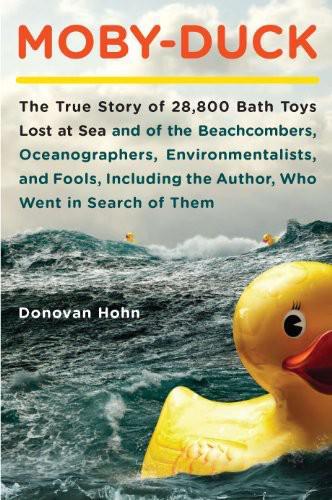
Moby-Duck: The True Story of 28,800 Bath Toys Lost at Sea and of the Beachcombers, Oceanographers, Environmentalists, and Fools, Including the Author, Who Went in Search of Them
by
Donovan Hohn
Published 1 Jan 2010
At that inclination, the stacks of containers, each one six containers tall, tall as a four-story townhouse, would have been more horizontal than vertical. Perhaps Dr. Ebbesmeyer would like to have a peek at the logbook, the captain discreetly suggested. He’d already opened it to January 10, 1992. There were the coordinates, the magic coordinates. THE GREAT PACIFIC GARBAGE PATCH OSCURS could now reconstruct, or “hindcast,” the routes the toys had traveled, producing a map of erratic trajectories that appeared to have been hand-drawn by a cartographer with palsy. Beginning at the scattered coordinates where beachcombers had reported finding toys, the lines wiggled west, converging at the point of origin: 44.7°N, 178.1°E, south of the Aleutians, near the international date line, where farthest west and farthest east meet.
…
If the toys had fallen overboard at the exact same spot just two years earlier, according to OSCURS, they would have taken a southerly route instead of a northerly one, ending up in the vicinity of Hawaii. In 1961, they would have drifted along the California coast. Though with far less certainty, OSCURS could forecast as well as hindcast, and in this respect, Ebbesmeyer and Ingraham were like meteorologists of the waves. Because the weather of the ocean usually changes more slowly than the weather of the skies, they were also like clairvoyants. OSCURS was their crystal ball. By simulating long-term mean surface geostrophic currents (those surface currents that flow steadily and enduringly, though not immutably, like rivers in the sea) as well as surface-mixed-layer currents that are functions of wind speed and direction (those currents that change almost as quickly as the skies), OSCURS could project the trajectories of the toys well into the future.
…
Likewise no one will ever know what Parvez Guard and his crew went through on that stormy October night in 1998 aboard the China. Demonic possession, however, would never stand up in court. Given the stakes involved, APL subsidized an expensive forensic investigation led by Willa France. France hired three meteorological consultants to hindcast the sea conditions with computers. Next, she hired oceanographers to computeranimate what would happen to a C-11 container ship under the conditions the China encountered, and the Maritime Research Institute Netherlands to conduct model tests in a wave tank three times as long as an Olympic swimming pool.
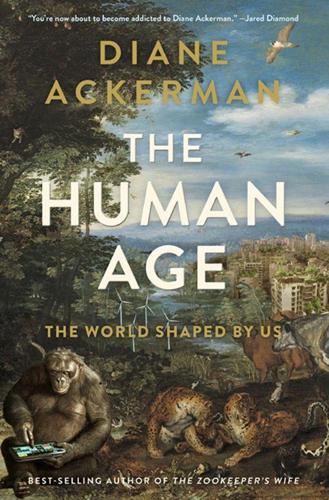
The Human Age: The World Shaped by Us
by
Diane Ackerman
Published 9 Sep 2014
And then there was Steel Pier, with all of its amusements and its diving horse. All the run-of-the-mills neighborhoods rely on, and the balm of meaning absorbed by homes, objects, streets, and piers—all gone. Hurricane season brings a humbling reminder that, despite our best efforts and prophesies, nature remains unpredictable. Even aided by hindcasts, as forecasters call reading the entrails of past hurricane seasons to predict the future, we really don’t know what stew of storms the Atlantic will dish up, especially now that we’ve dumped in strange seasonings. We can’t yet predict the location of the next typhoon or tornado, even with all our high-tech weather instruments, any more than we know the final scores of the Caribbean’s upcoming cricket matches.